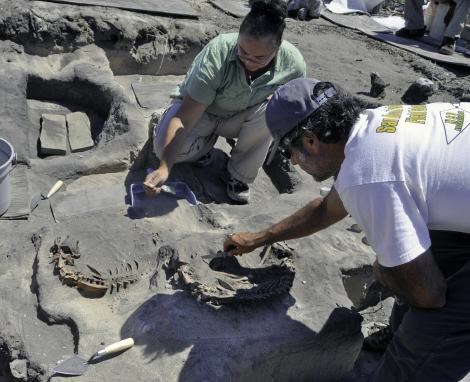
Chapter 25
Dr. René Vellanoweth, Professor of Anthropology, California State University, Los Angeles, discusses the dog burials he has found on San Nicolas Island.
Our investigations on San Nicolas Island have revealed quite a bit about the Native Americans who lived there for more than 10,000 years. We have learned that they relied heavily on the sea and the island for food and the raw materials needed for making tools, weapons, and other objects. They also traded with their nearby and distant neighbors to acquire things they needed or desired but could not get from the island itself.
Our work has revealed that the Native people brought the domesticated dog with them from the mainland, and that they developed a close relationship with human’s “best friend.” We know the Native islanders and dogs lived and worked side-by-side based on the dog burials we have excavated.
In one case, my students and I found a dog burial that had two female puppies with the remains of their last meals still intact within the stomach portions of their skeletons. In the same site, located about 30 feet from this double dog burial, we incredibly found a triple dog burial.
The three dogs in the triple dog burial were all full-grown adult males. The bones of the male dogs show evidence that they were working dogs, trained by the islanders to help hunt and carry things in packs and sleds.
That the dogs were buried in an area of the site equivalent to a church or temple speaks volumes about the close, personal nature of the relationship between the islanders and their dogs.
-
Listen to chapter 25 entry
Learn about dog burials on San Nicolas Island.
Last updated: April 26, 2025
